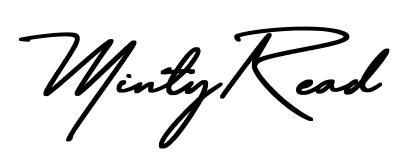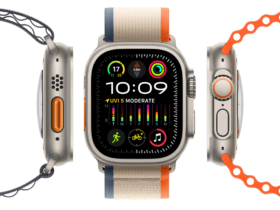Creating a diet chart is an essential step towards achieving your health and fitness goals. Whether you’re aiming to lose weight, build muscle, or simply maintain a healthy lifestyle, a well-structured diet chart can make a significant difference. In this guide, we’ll walk you through the process of designing a personalized diet chart that suits your needs and preferences.
1. Assess Your Goals and Needs
Before you start crafting your diet chart, it’s crucial to determine your specific goals. Are you looking to lose weight, gain muscle, or improve overall health? Understanding your objectives will help you create a diet plan that aligns with your needs.
1.1 Set Clear Goals
- Weight Loss: If your primary goal is to shed pounds, focus on a calorie deficit. This means consuming fewer calories than you burn.
- Muscle Gain: For building muscle, you’ll need to consume more calories than you burn, with an emphasis on protein intake.
- General Health: If your goal is overall well-being, aim for a balanced diet rich in essential nutrients.
1.2 Consider Special Requirements
- Allergies and Intolerances: Note any food allergies or intolerances you have and avoid those items in your diet chart.
- Medical Conditions: If you have medical conditions like diabetes or hypertension, tailor your diet to manage these effectively.
2. Calculate Your Caloric Needs
Understanding how many calories you need is a crucial step in making your diet chart. Use a calorie calculator or consult a nutritionist to determine your daily caloric needs based on your age, gender, weight, height, and activity level.
2.1 Calculate Basal Metabolic Rate (BMR)
Your BMR is the number of calories your body needs at rest to maintain vital functions. You can calculate it using formulas like the Harris-Benedict equation.
2.2 Adjust for Activity Level
Multiply your BMR by an activity factor to estimate your total daily energy expenditure (TDEE). This factor varies based on your activity level, such as sedentary, lightly active, moderately active, or very active.
3. Design Your Meal Plan
With your goals and caloric needs in mind, it’s time to create a meal plan. A balanced diet includes a variety of nutrients, so aim to incorporate the following components:

3.1 Macronutrients
- Proteins: Essential for muscle repair and growth. Sources include lean meats, fish, eggs, legumes, and dairy products.
- Carbohydrates: Provide energy. Choose complex carbs like whole grains, fruits, and vegetables over simple sugars.
- Fats: Important for overall health. Opt for healthy fats such as avocados, nuts, seeds, and olive oil.
3.2 Micronutrients
- Vitamins and Minerals: Ensure you get a range of vitamins and minerals by consuming a colorful variety of fruits and vegetables. Include sources of calcium, iron, vitamin C, and more.
3.3 Hydration
- Water: Staying hydrated is vital for overall health. Aim to drink at least 8 glasses of water a day, or more if you’re active.
3.4 Sample Meal Plan
Here’s an example of a balanced meal plan:
- Breakfast: Greek yogurt with berries and a sprinkle of granola.
- Mid-Morning Snack: An apple with a handful of almonds.
- Lunch: Grilled chicken salad with mixed greens, cherry tomatoes, and a vinaigrette dressing.
- Afternoon Snack: Carrot sticks with hummus.
- Dinner: Baked salmon with quinoa and steamed broccoli.
- Evening Snack: A small bowl of mixed fruit.
4. Portion Control and Meal Timing
Portion control is crucial for managing calorie intake. Use tools like measuring cups or a food scale to help with portion sizes.
4.1 Meal Timing
- Frequency: Aim for 4-6 small meals throughout the day to keep your metabolism active and avoid overeating.
- Timing: Eating regularly and at consistent times helps maintain stable blood sugar levels and prevents excessive hunger.
5. Incorporate Variety
Variety is key to a sustainable diet plan. Rotate different foods and recipes to ensure you get a wide range of nutrients and prevent dietary boredom. Experiment with new fruits, vegetables, proteins, and grains to keep your meals exciting and nutritious.
6. Monitor and Adjust
Creating a diet chart is not a one-time task. Regularly monitor your progress and adjust your plan as needed. Keep track of how your body responds to the diet and make changes based on your results and any feedback from a healthcare professional.

6.1 Track Your Progress
- Weight and Measurements: Track your weight and body measurements regularly to gauge your progress.
- Energy Levels and Mood: Pay attention to how your diet affects your energy levels and mood.
6.2 Adjustments
- If You’re Not Seeing Results: Reevaluate your calorie intake and macronutrient distribution. You might need to adjust your portions or food choices.
- If You Experience Discomfort: If you notice any adverse effects, such as digestive issues or fatigue, adjust your diet accordingly.
7. Seek Professional Guidance
If you’re unsure about creating a diet chart or have specific health concerns, consider consulting a registered dietitian or nutritionist. They can provide personalized recommendations and ensure that your diet meets your nutritional needs and health goals.
Conclusion
Creating a diet chart is a personalized process that involves assessing your goals, calculating your caloric needs, and designing a balanced meal plan. By focusing on macronutrients, micronutrients, hydration, and portion control, you can create a diet chart that supports your health and fitness objectives. Remember to monitor your progress and make adjustments as needed to stay on track. With careful planning and a commitment to your goals, a well-crafted diet chart can be a powerful tool in achieving a healthier, more balanced lifestyle.




















Leave a Reply